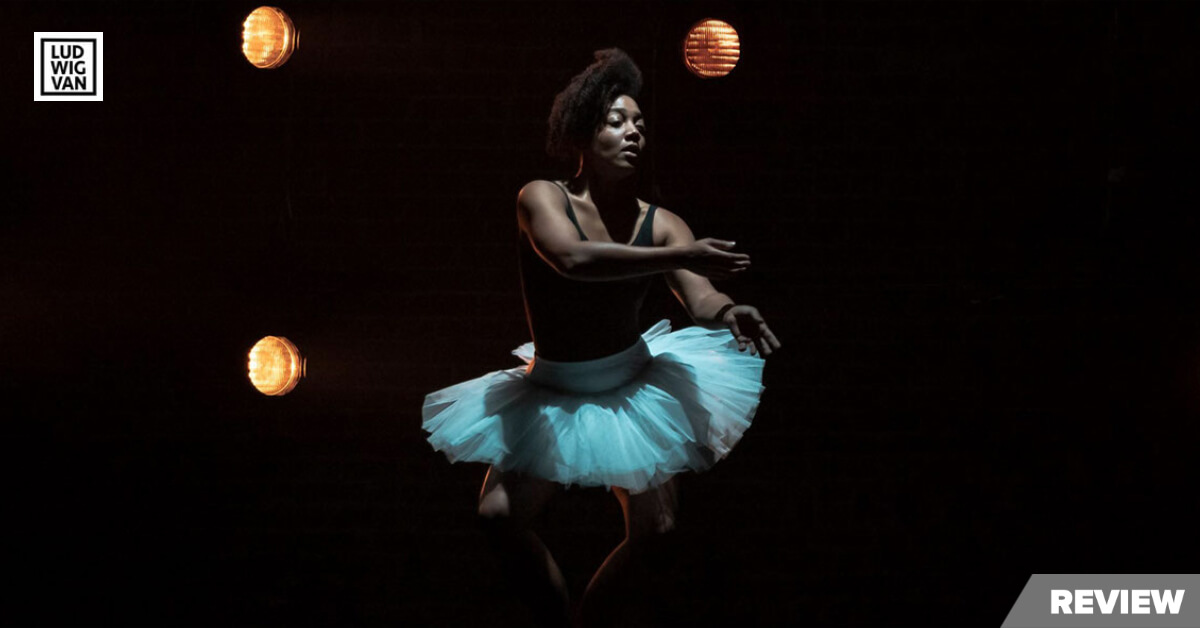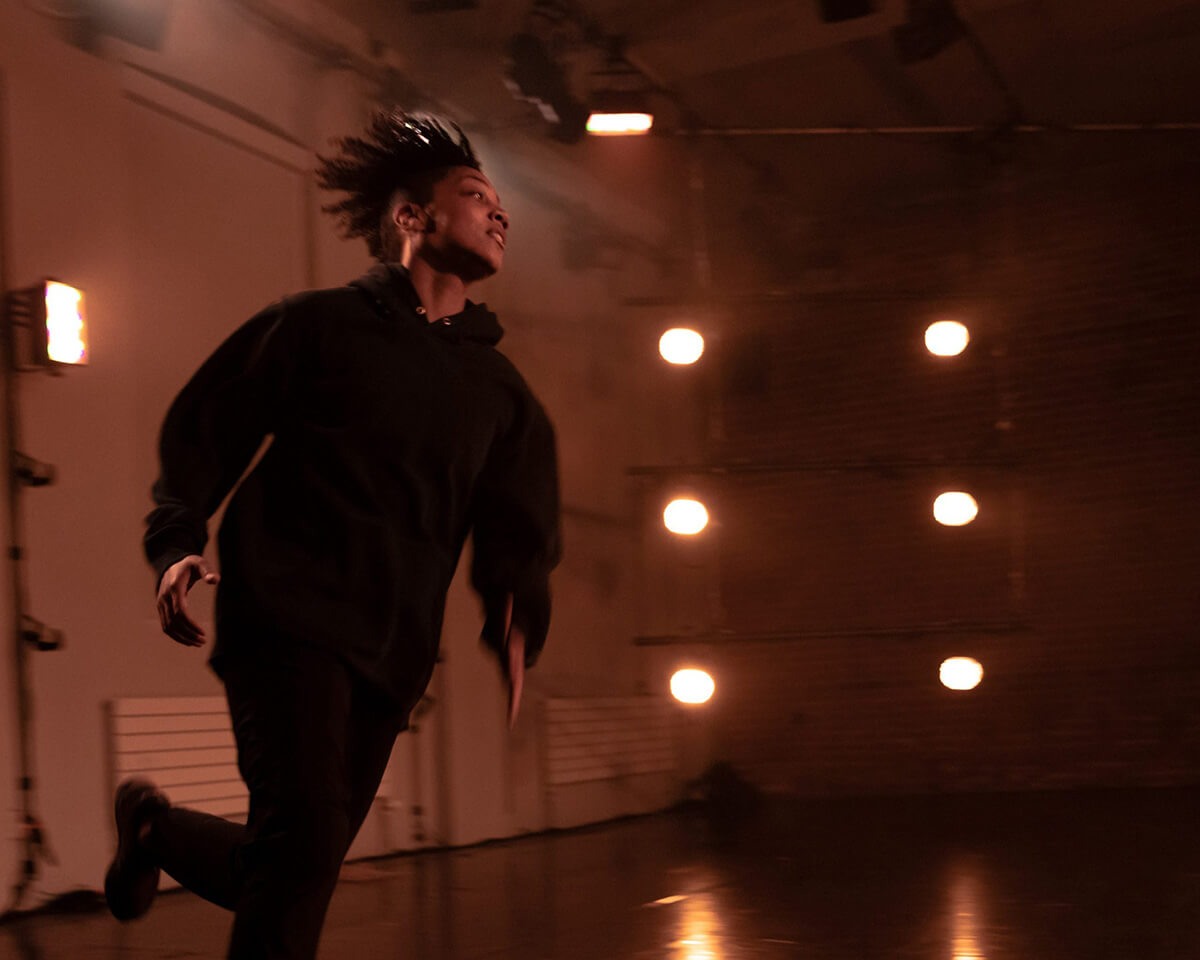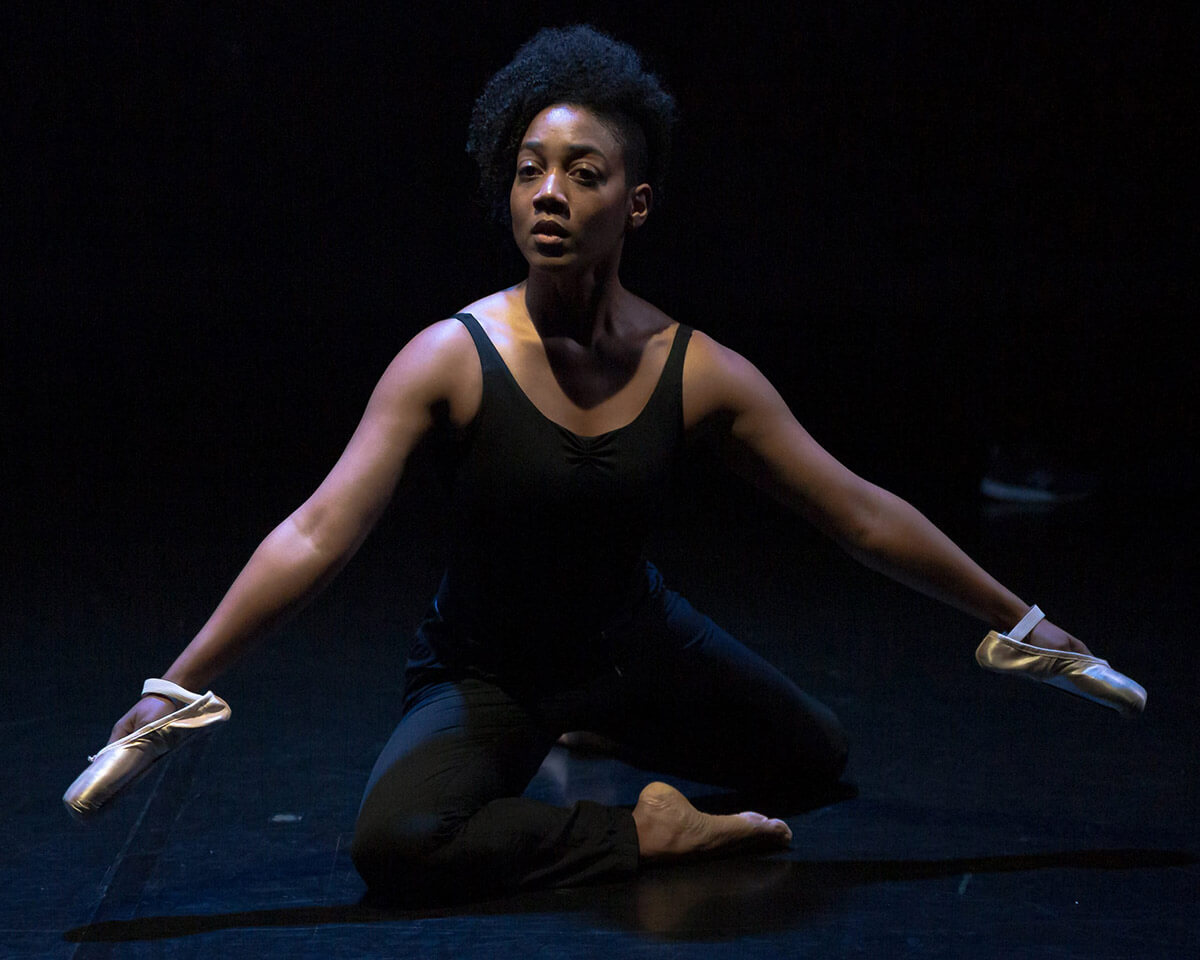
Citadel + Compagnie/Black Ballerina, choreographed and performed by Syreeta Hector, livestream directed by Barbara Willis Sweete, Nov. 27 and 28, Free. Access available at citadelcie.com.
Many forces have gone into the making of Syreeta Hector, all of which play a part in her heart-felt solo Black Ballerina.
She grew up in Quispamsis, a suburb of Saint John, New Brunswick, of Mi’kmaq, African-American and Acadian heritage. She is a graduate of Canada’s National Ballet School Teacher Training Program. An interest in contemporary dance took her to the School of Toronto Dance Theatre, after which she became a member of Toronto Dance Theatre for five seasons. Her M.A. thesis from York University explored the relationship between Métis dance and English, Scottish and Irish country dancing. She has also been an educator in dance history, helped develop a board game linking dance to various subjects in the Ontario school curriculum, and made the final cut to become of member of New York’s Martha Graham Company. All the while she has been teaching ballet, while taking training in various contemporary dance techniques. And, oh yes, she choreographs.
Black Ballerina was shown in 2019 as a short work-in-progress, and was nominated for a Dora Mavor Moore Award. This grown-up version deepens Hector’s exploration of the “minority body” within the context of white culture, and her own relationship with her Indigenous, Black and Métis roots. The piece also touches on systemic racism within the framework of ballet. It was her ballet teacher in Saint John who suggested that Hector go into teacher training, and when I learned this, I thought to myself, but she didn’t suggest that Hector audition for a ballet company.

This performance is the first offering of the Citadel LIVE series, and is directed by the distinguished Barbara Willis Sweete, arguably Canada’s most esteemed expert in livestreaming. For this performance, Sweete used a three-camera crew. I’m assuming that the opening was the director’s idea. We see Hector arriving at the Citadel on her bicycle. She then talks to the camera, telling us that the pink ballet slippers and pink tights are to help create the line of the ballerina’s body, but it doesn’t work with Black skin colour. We learn that there were only two mixed race students at her school, and because she wasn’t taught Indigenous or Black history, she never came to terms with her identity. This solo is to help her find that relationship.
My initial takeaway from Black Ballerina is that it is not an angry work. Rather, it is thoughtful, reflective, and even sad. The opening finds Hector as a shapeless form, almost monster-like, covered in a black hoodie. Amorphous and indistinct, she has no identity. Once she uncurls her body, which evokes the feeling of pain, she takes off the hoodie to reveal a hybrid costume comprised of the top of a leotard and wide pantaloons. The big surprise is a blonde wig. Black Ballerina is rich in such symbols that convey multitudes of meaning, like this wig of flowing blonde hair.
Another important metaphor are the shoes. Hector first wears the ballet slippers on her hands and we can see the sharp contrast to her dark skin. Later she performs with one ballet slipper and an ankle-high gold sneaker, and finally in both sneakers. Each time, her body changes its shape. Her ballet moves are quite beautiful, and we can see her classically trained body. She even throws in the ending of Pavlova’s famous solo The Dying Swan, which itself is a metaphor. At other times, contemporary dance is her modus operandi.

Throughout the piece, she runs frantically in place. Is Hector running to or from? She also performs an Indigenous dance and a bit of hip hop, but in each case, they are sketchy and not fully formed, into which she keeps throwing hints of ballet poses, pointing to her own confusion. In the dramatic ending, she wears a white tutu, as white powder falls from above, covering her face and body with while splotches. Surely this is the overpowering presence of white colonialism and culture. The ballet moves here are ragged, not the grace we saw in the opening segment. Throughout all these various incarnations or chapters, Hector executes her physicality with clear, clean movement choices. We are never left wondering where her thoughts are. And the final image is particularly poignant, as Sweete’s camera backs away, leaving Hector a distant figure hovering in a white haze, a look of longing on her face.
Each section has its own distinct musical accompaniment, most of which are electronica drones and static, but there is also an Indigenous drum circle, rap music, a voice-over about a camouflaged octopus, and angry anti-government comments from Indigenous leaders. The sound design is credited to Germaine Liu and Mark Zurawinski, which is a change from the short work that featured original music. The soundtrack, as Hector explained in the Q&A, is like her playlist, and it works very well isolating each section one from the other. Noah Feaver’s lighting design has a bank of lights at the back of Hector, providing a shadowy harshness that befits the topic.
In the final analysis, Hector was clearly in focus with her ballet goals at the beginning of her career, but clearly, when her interests turned to the various threads of her heritage, a whole range of emotions have kicked in. Overall, Black Ballerina conveys this tapestry of confused and painful thoughts in a most expressive manner.
And a final note. As the performance ended, we were treated with a surprise. As the credits rolled, we were shown Foot Dance, a creation of Sweete’s featuring Hector’s feet and those hand-held ballet slippers in split-screen technique. Short though it was, it was also very provocative.
#LUDWIGVAN
Get the daily arts news straight to your inbox.



